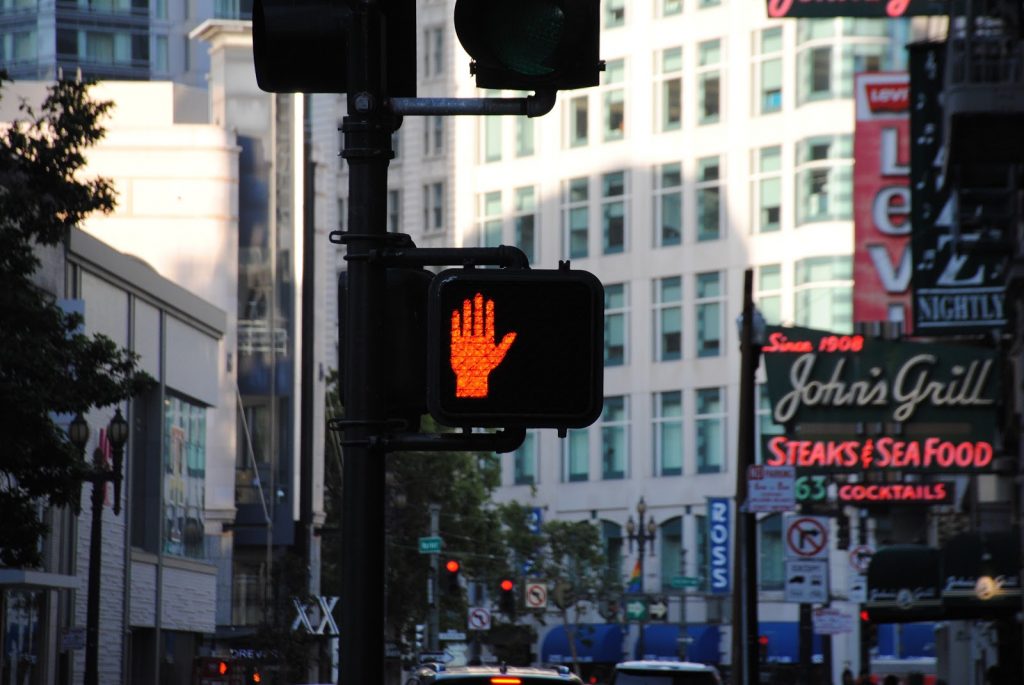As the rate of ad-blocking continues to increase, advertisers need to take action to ensure that they still reach their audience. What strategies are available to advertisers? What are the best practices for advertising in this new era? We’re here to explain it all to you.
To advertisers, ad-blocking is a constant threat that keeps them from reaching their target audiences. To users, it’s a necessary tool that allows them to access content on the net, without being bombarded with unwanted ads. Figures show that over 25% of internet users in the US have installed some form of ad-blocking software and the stats are even higher in France and Germany. Users are no longer prepared to accept pop-ups and slow-loading websites because of heavy ads—the era of ad-blocking is upon us.
The ad-blocking user penetration rate in the United States from 2014 to 2021
Not only are users relying more heavily on ad-blockers, but browsers themselves are turning to ad-blocking to ensure websites load quickly and correctly. Users in this day and age aren’t happy to wait longer than 2 seconds for a page to load and 40% will simply abandon that page and surf elsewhere. Hence Google’s decision to develop a Heavy Ad Intervention feature that will unload online ads that consume too many system resources, which include network bandwidth and CPU processing power. For now, this tech is still in development but when it eventually goes live, it could have huge ramifications for advertisers. Learn more about it in our blog post, click here. So what can advertisers do to engage their audiences in this era of ad-blocking?
Use slicker and lighter ads.
First of all, we need to recognize that this is 2020 and we have no excuse to be running heavy, website, speed-sucking ads. Gone are the early days of HTML5; technology now exists that produces lighter ads, which still pack a punch but don’t take ages to load. Nexd, for example, allows advertisers to create beautiful, engaging ads that aren’t overly bloated and bulky. Imagine a full-experience ad that loads in 0.2 seconds, that could be your reality. And the best part is? It can all be done without having to write a single line of code.
Ask yourself, if you’re constantly working with slow, heavy ads, is it really a wonder that users consider blocking them? They’ve got better things to do with their time than to wait for your ads to load. Take our advice, pick up a pair of scissors and trim that ad down. Your audience will thank you for it.
Focus on creativity
Secondly, we as an industry need to come to terms with one point: not all advertising is worth a user’s attention. On average, users are bombarded with over 1,700 banner ads a month, but only see half of them. Consider this hypothetical situation, you walk into town every day and on your way, you pass a salesman pitching double-pane glazing. He calls out to you every time you walk past, asking whether you need new windows. The first time you reply, the second time you ignore him and eventually you change your route into town. It’s the same problem with digital advertising, it’s hardly surprising that some users have had enough and are taking action.
But what if that same salesman didn’t simply call out to you every day; what if he changed his approach and tried to be creative? Well, as advertisers, we are that double-pane glazing salesman and to stem the tide of ad-blocking, we need to wake up and start producing ads that are creative and better engage our audience.
Being creative, one might say, is easier said than done. But nowadays that really needn’t be the case, especially with the numerous rich media ad formats available, especially on Nexd’s Campaign Manager. Rich media is ideal for changing users’ minds on advertising—it’s far more engaging than a static ad, supports brand recall, and essentially means that users are less likely to get fed up with your ad by installing an adblocker.
Take advantage of contextual advertising
Finally, it’s helpful to look at what type of ads users find most annoying and therefore want to block. In a survey carried out by eMarketer, one of the least annoying types of ads identified by users is one that is targeted and based on their interests, in other words, contextual advertising.
In a nutshell, contextual advertising means that ads are targeted, based on their subject matter, concerning the content of the viewed web pages. If a person is reading something about cats, they’re likely to purchase some cat food soon. Rather than playing big brother and chasing your audience across the net, you can place helpful, unintrusive ads on a page where your brand belongs.
Although contextual advertising has been around for some time, it was relegated behind the more in vogue, data-driven advertising option for ad planners. But recently, it’s been experiencing a bit of a revival.
With privacy regulations coming into force across the globe and with Google’s recent announcement that third-party cookies will soon be a thing of the past on Chrome, the adtech industry is increasingly looking towards contextual advertising as a key strategy for engaging audiences. Just this week, it was announced that JW Player was teaming up with Oracle Data Cloud to improve its contextual advertising offering.
As the industry faces up to the threat of ad-blocking and privacy regulations, contextual advertising will undoubtedly play a bigger role in future ad campaigns.
Ever keen to keep you up-to-date with best practices in the world of advertising, we’ll be shining the light on different types of contextual advertising trends in the coming weeks, including real-time marketing and location-based advertising. Watch this space for more concrete tips and actionable advice for your advertising campaigns in the ad-blocking era.
